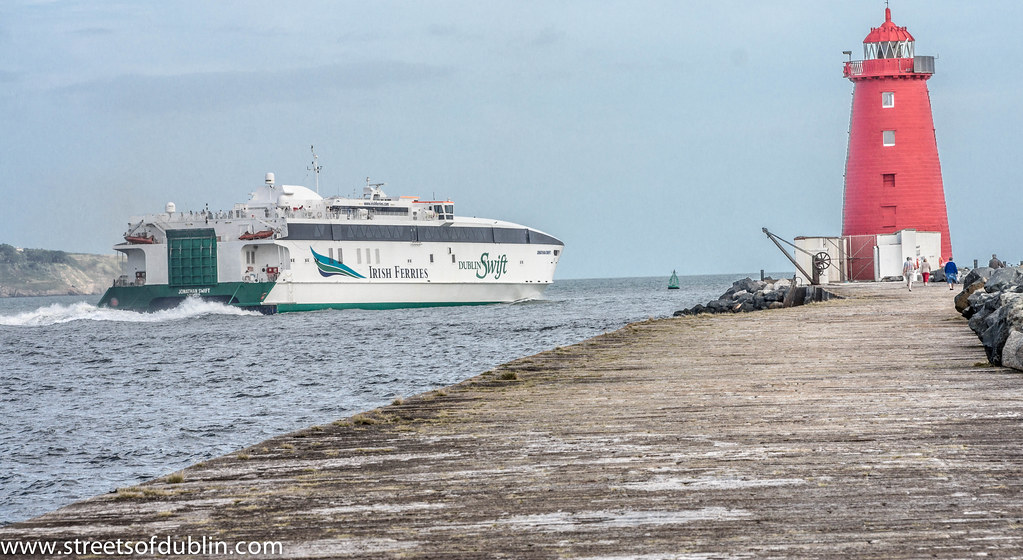Dublin Port: HSC Jonathan Swift (aka Dublin Swift)
SORRY FOR THE DELAY
HSC Jonathan Swift (aka Dublin Swift) is a high-speed ferry that is owned and operated by Irish Ferries on their Dublin-Holyhead service. She is named after the Anglo-Irish author Jonathan Swift.
The vessel is of a catamaran design.
The vessel, a catamaran built by Austal Ships in Australia, was the first high-speed craft operated by Irish Ferries. She entered service in July 1999.
Jonathan Swift was constructed by Austal Ships in Henderson, Australia, at a cost IR£29 million. The vessel was launched in February 1999 and was delivered to Dublin in May 1999, before entering service in July 1999.
The introduction of Jonathan Swift was delayed due to an industrial dispute between Irish Ferries and the trade union Services, Industrial, Professional & Technical Union, who represented seven officers that had been transferred from the company's conventional ferry operations to man the new high-speed ferry. These officers refused to operate the vessel at lower manning levels which had been proposed by Irish Ferries. Irish Ferries threatened to sell or charter Jonathan Swift if the issue was not resolved.
On its entry into service in July 1999, Jonathan Swift increased Irish Ferries' passenger capacity on the Dublin-Holyhead route by 73%, and its car capacity by 50%. The vessel has spent its entire career on this route, operating alongside the company's conventional ferries.
The vessel is of a catamaran design.
The vessel, a catamaran built by Austal Ships in Australia, was the first high-speed craft operated by Irish Ferries. She entered service in July 1999.
Jonathan Swift was constructed by Austal Ships in Henderson, Australia, at a cost IR£29 million. The vessel was launched in February 1999 and was delivered to Dublin in May 1999, before entering service in July 1999.
The introduction of Jonathan Swift was delayed due to an industrial dispute between Irish Ferries and the trade union Services, Industrial, Professional & Technical Union, who represented seven officers that had been transferred from the company's conventional ferry operations to man the new high-speed ferry. These officers refused to operate the vessel at lower manning levels which had been proposed by Irish Ferries. Irish Ferries threatened to sell or charter Jonathan Swift if the issue was not resolved.
On its entry into service in July 1999, Jonathan Swift increased Irish Ferries' passenger capacity on the Dublin-Holyhead route by 73%, and its car capacity by 50%. The vessel has spent its entire career on this route, operating alongside the company's conventional ferries.
